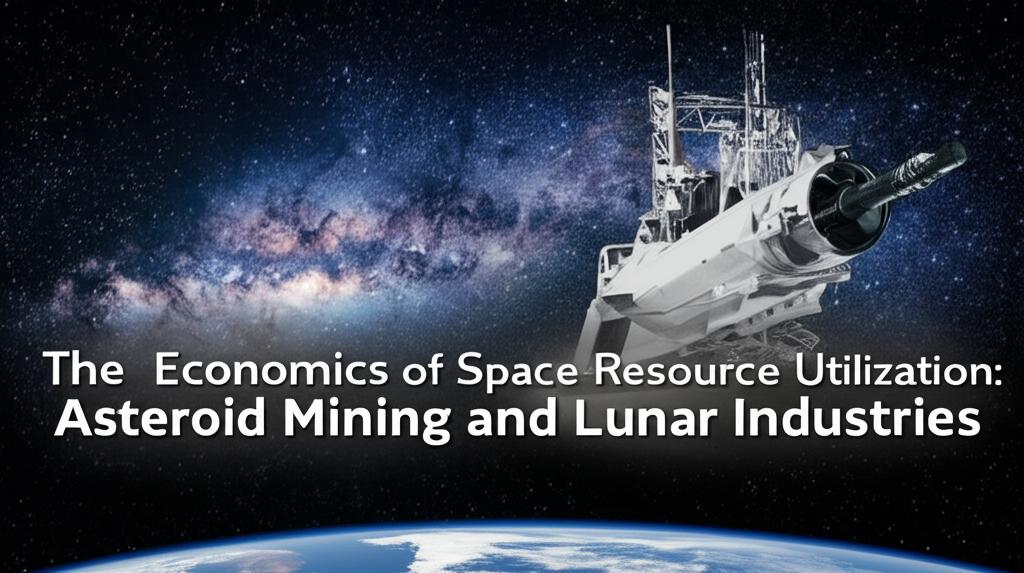The final frontier is increasingly viewed through an economic lens, with celestial bodies like asteroids and the Moon becoming targets for resource extraction. This shift marks a pivotal moment where the theoretical promise of space resources begins to intersect with tangible business plans and technological advancements. The long-term vision is a bustling in-space economy, fueled by materials sourced beyond Earth.
Asteroid Mining: High Risk, Potentially Higher RewardAsteroids, remnants from the solar system's formation, are treasure troves of materials. Some are rich in water ice, crucial for creating rocket propellant, sustaining life support systems, and agriculture in space. Others contain significant concentrations of Platinum Group Metals (PGMs) like platinum, palladium, and rhodium, which are highly valuable on Earth for industrial applications, electronics, and as catalysts. Additionally, common industrial metals such as iron, nickel, and cobalt are abundant.
The primary economic driver for asteroid mining is currently in-situ resource utilization (ISRU). The staggering cost of launching materials from Earth makes sourcing them in space highly attractive. Water ice, when processed into hydrogen and oxygen, can become propellant for satellites and spacecraft, effectively creating "gas stations" in orbit. This could dramatically lower the cost of deep space missions and cislunar operations. While returning PGMs to Earth presents a more distant economic prospect due to the immense logistical challenges and potential market disruption, the initial focus is on building an in-space market for water and construction materials.
However, the path to profitable asteroid mining is fraught with challenges. The upfront capital investment is enormous, covering research and development, specialized spacecraft, complex robotic extraction technologies, and long-duration missions. Identifying suitable asteroid targets, accurately assessing their composition, and developing reliable extraction and processing techniques in harsh microgravity environments are significant technological hurdles. The return on investment timelines are exceptionally long, demanding patient capital and robust long-term planning. Early pioneers in this field are focusing on technology demonstration missions and securing foundational patents, with companies and space agencies collaborating to overcome these initial barriers.
Lunar Industries: Cislunar Economy and Gateway to MarsThe Moon, our closest celestial neighbor, is a prime candidate for establishing the first off-world industries. Decades of exploration have confirmed the presence of valuable resources, most notably water ice in permanently shadowed regions at the poles. This lunar ice is pivotal for the Artemis program and future human presence, as it can be converted into breathable air, drinking water, and rocket fuel. This reduces Earth-dependency for lunar missions and could make the Moon a staging post for missions to Mars and beyond.
Beyond water, lunar regolith (the layer of loose dust and small rocks on the surface) offers potential as a construction material. Using techniques like 3D printing, regolith could be used to build habitats, landing pads, and radiation shielding, further reducing the mass that needs to be launched from Earth. Helium-3, an isotope rare on Earth but found in lunar soil, is another resource of interest, touted as a potential fuel for future nuclear fusion reactors, though this remains a more speculative, long-term prospect.
The economic development of lunar industries is being spurred by renewed governmental interest, particularly from NASA's Artemis program, which actively encourages commercial partnerships. Commercial Lunar Payload Services (CLPS) initiatives are enabling private companies to send landers and rovers to the Moon, fostering an ecosystem of service providers for transportation, resource prospecting, and infrastructure development. The lower proximity of the Moon compared to most asteroids reduces travel times and communication delays, making initial operations somewhat more manageable.
However, challenges persist. The lunar environment is harsh, with extreme temperature variations, abrasive dust, and radiation. Developing robust extraction and processing technologies suited for these conditions requires significant investment. Creating a sustainable market for lunar resources beyond government contracts is also crucial for long-term economic viability. Initially, the primary customer will be space agencies and their contractors, purchasing propellant and other resources for their missions.
Overarching Economic Considerations and Future TrajectoryThe economics of space resource utilization depend heavily on reducing launch costs, a trend already underway with reusable rocket technology. As access to space becomes cheaper and more frequent, the business cases for asteroid mining and lunar industries become more compelling.
Investment in this nascent sector is currently a mix of government funding, venture capital, and strategic investments from established aerospace companies. Public-private partnerships are essential, with governments often acting as anchor customers and providing regulatory frameworks, while private companies drive innovation and operational efficiency.
The creation of clear international legal and regulatory frameworks for space resource extraction and property rights is another critical factor. While the Outer Space Treaty provides foundational principles, more specific agreements will be needed to provide certainty for commercial investors.
Looking ahead, the development of space resources is not just about an economic return; it's about enabling a sustainable and expanding human presence in space. Early efforts will focus on prospecting, technology demonstration, and establishing pilot processing plants. The first commercially viable products are likely to be water-derived propellants for in-space transportation. As infrastructure grows and technologies mature, the range of extracted resources and manufactured products will expand, potentially leading to in-space manufacturing, servicing, and even tourism supported by locally sourced materials.
While significant hurdles remain, the journey towards a vibrant economy based on space resources is underway. The coming decades will be crucial in transforming the ambitious visions of asteroid mining and lunar industries into profitable and sustainable realities, fundamentally changing humanity's relationship with space.

